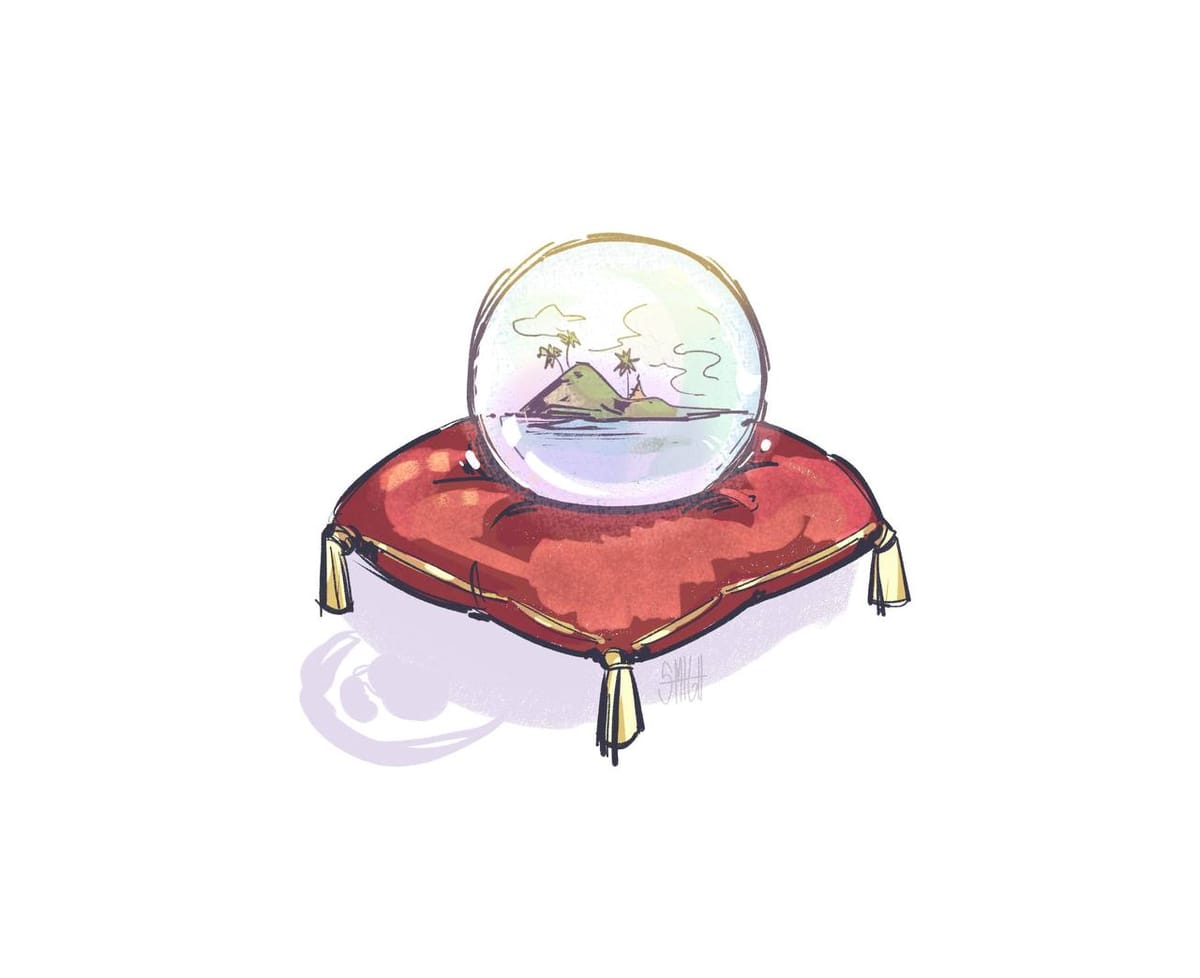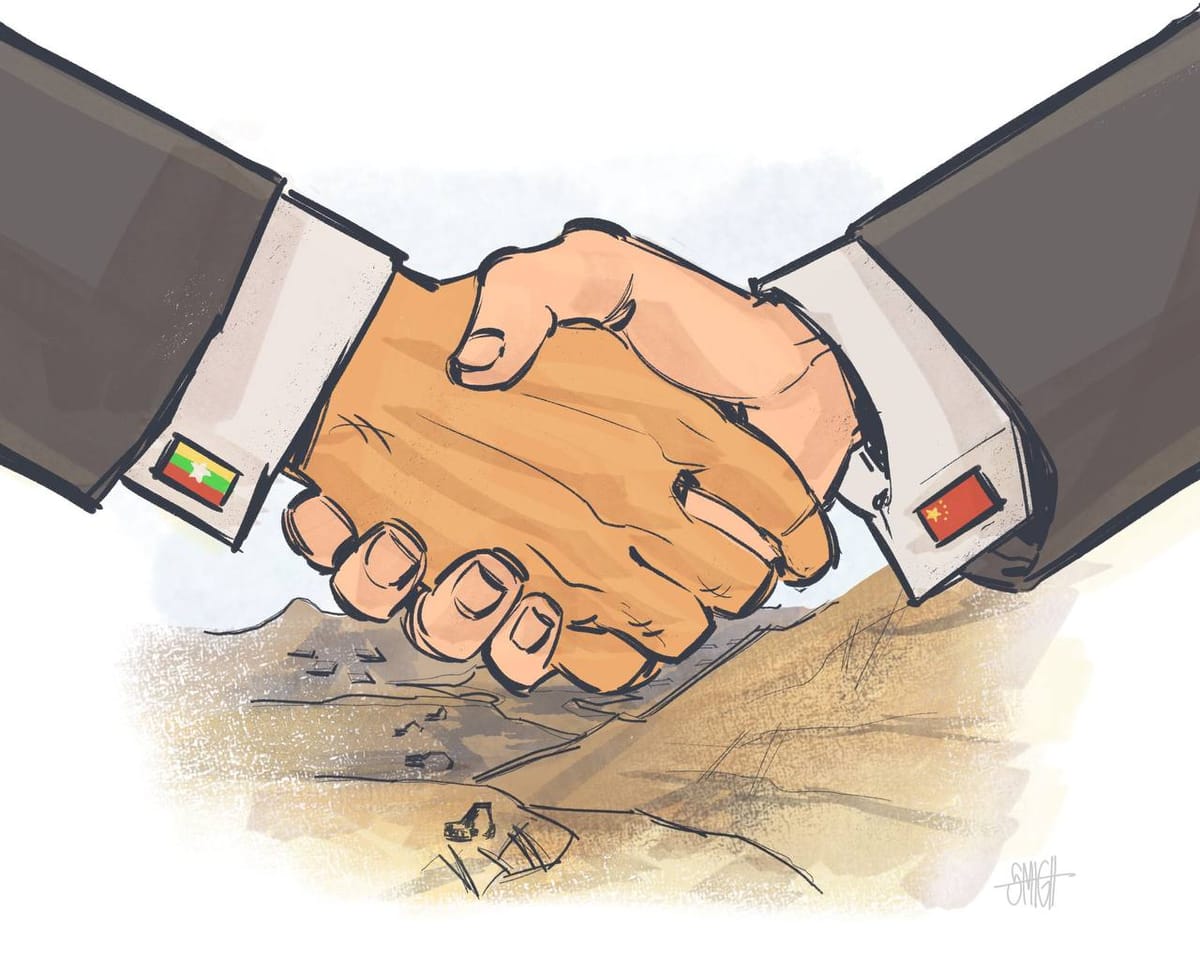
In mid-2023, satellite images emerged that caused a stir among global observers, including India. The news was about China allegedly constructing a naval intelligence base on Myanmar's Coco Island.
Actually, there have been numerous interesting geopolitical histories concerning Myanmar's islands. For instance, the First Anglo-Burmese War was triggered by issues relating to Shin Ma Phyu Island. Similarly, colonial powers once competed for Haingyi Island due to its geopolitical significance. So why was Haingyi Island important to the colonial powers? Is it still geopolitically significant among world powers today? And what about other islands? Let's examine this.
Haingyi Island in the Past
The colonials called Haingyi Island "Negrais," and what is now known as Cape Negrais was called Negrais Point. The history of Haingyi Island became prominent during the rise of Alaungpaya, who established the Third Myanmar Kingdom. In 1752, when the Nyaungyan Dynasty fell, the famous Mon-Burmese War broke out. This war involved not just the Mon and Burmese but also the French and British operating behind the scenes. The British established the East India Company to dominate Asia, while the French also sought to extend their influence in the region. As a result, both nations supported the Mons, who had the upper hand in the conflict at the time.
During this period, the Burmese were regrouping while the Mons held considerable power. The Mons received both military and weapons assistance from the French and advanced as far as Ava. Similarly, the British provided comparable weapons support to the Mons.
Thus, with the Mon king's permission, the British gained their first foothold on Haingyi Island, as noted in Dr. Thant Myint's book "The Broken Head, Anglo-Burmese Relations (1752-1948)." After establishing themselves on Haingyi Island, the British opened a trading post. Although Haingyi Island had harsh weather conditions and was underdeveloped, its strategic location made it valuable for trade, making it attractive to colonial powers, with the British securing it before the French could.
The First Anglo-Burmese Relations Starting from Haingyi Island
When the British established their trading post on Haingyi Island, Alaungpaya had already conquered Upper Burma. In 1755, Alaungpaya moved south and began attacking the Mons. When Alaungpaya's forces captured Yangon, they also captured French and British ships but did not seize them.
According to Dr. Thant Myint's "A History of Burma (1967)" published by Columbia University, this was because Alaungpaya wanted to follow international law and desired modern weapons from both France and Britain.
In 1756, Alaungpaya sent an official letter to King George II of England through Captain John Dyer who had arrived in Yangon. The letter was composed by the minister Letwe Thondara and sent in an ivory case studded with 24 rubies. According to historical records, this letter was Alaungpaya's proposal requesting support with military weapons for his planned conquests of Mon and Thai territories.

Where Opportunities Bloom
Imagine a vibrant space designed specifically for young people in Myanmar – a place where creativity, learning, and connection come together. The Build Myanmar Community Center is the ultimate solution for youth seeking inspiration and opportunity.
This innovative center offers:
- Fully-equipped spaces with high-speed internet
- Flexible co-working areas for collaboration
- Networking opportunities
- Diverse workshops led by experts from various fields
- A comprehensive library for knowledge seekers
- Maker spaces to fuel creativity and innovation
Interested in transforming your potential? Explore the link below and discover a world of possibilities.
Dr. Thant Myint writes in his "A History of Burma (1967)" that Alaungpaya's dream was to conquer Thailand. In this letter, Alaungpaya expressed his dissatisfaction with the British presence on Haingyi Island but agreed to allow their continued stay. However, when the letter was sent, the British were engaged in the Seven Years' War with America and couldn't respond immediately. This angered Alaungpaya.
Despite the strained relations between Alaungpaya and the English king, in 1756, Alaungpaya agreed to let the British settle on Haingyi Island. Under this agreement, the British would be allowed to build a settlement on Haingyi Island and conduct free trade. They were also permitted to build a trading post in Yangon. In return, the British would supply Alaungpaya with military equipment and agree not to associate with or assist any of Myanmar's enemies.
However, the British later helped the Mons who were attempting to rebel against the Myanmar king, who was busy with Manipur affairs. When Alaungpaya discovered this, he not only recaptured Haingyi Island in 1759 but also burned down the British settlements there. After this, Haingyi Island became Myanmar territory.
The Colonial Powers' Dream of Haingyi Island
Why did Haingyi Island catch the eye of both the British and French? While Haingyi Island naturally had harsh weather conditions and extreme tides, its proximity to sea routes made it geopolitically important and ideal for naval control over lower Myanmar, making it attractive to colonial powers.
Studying colonial expansion methods reveals the pattern of the 3Ms (Missionary, Merchant, and Military) - first came the missionaries, then the merchants, and finally military conflicts.
That's why after capturing Lower Myanmar, the British colonials attempted to build a new city on the weather-beaten Haingyi Island, as historian Dr. Than Tun writes. The city was to be built by Lord Dalhousie, the Governor-General of India. The city planning can be found in Lord Dalhousie's letter to Sir George Couper, a British officer stationed in Myanmar. The city was to be named Dalhousie.
In 1855, the foundation was laid and the city was mapped out. Government buildings including a court, police station, and treasury were planned along the waterfront as the city began taking shape. However, in 1856, a cyclone struck, submerging all the planned waterfront areas. As a result, the partially constructed prison and court had to be relocated to Pathein. Thus, the city planning project was destroyed. Had the cyclone not struck, there would have been a British-built city in Myanmar, and Haingyi Island might have become the bustling port city Lord Dalhousie had envisioned.
The Shift from Haingyi Island to Coco Island
While Haingyi Island, which had caught British attention throughout the Feudal and Colonial periods, was largely overlooked in terms of geopolitical importance after independence, it began receiving attention again in the 1990s, along with other Myanmar-owned islands.
Haingyi Island remains strategically important not only for Myanmar but also for neighboring powers India and China. Located near sea routes, Haingyi Island is crucial for China as an outlet to the Indian Ocean, while for India, it's important in countering China's regional influence attempts. This is why rumors emerged in the 1990s about China building an intelligence station on Haingyi Island. According to unverifiable reports, there were naval engineers and construction teams from the People's Liberation Army (Chinese military) on Haingyi Island, Coco Island, and other islands.
Although these were just rumors, General Khin Nyunt himself had to take Indian Navy Chief Admiral Arun Prakash and his delegation to Coco Island for inspection and explanation. China also had to officially deny these claims multiple times. Thus, Coco Island has gained more attention than Haingyi Island in modern history.
Coco Island, located only 50 miles from India's Nicobar Islands in the Andaman Sea, is strategically important for India. This is because from Coco Island, one can effectively monitor India's maritime activities. Therefore, India has consistently been concerned about potential Chinese surveillance stations on Myanmar's islands, including Haingyi Island.
Amid these Indian concerns, in January 2023, the UK-based international research organization Chatham House released satellite evidence reporting Chinese surveillance stations being built on Coco Island. The satellite images showed new hangars for aircraft, extended runways, and buildings equipped with radar systems. Regarding these developments, the current Myanmar government, unlike in the 1990s, remains silent about denying these claims. The Chinese government, however, has firmly denied them.
The Future Direction of Haingyi Island
In Myanmar's history, lessons about Myanmar's islands often emerge during times of domestic instability. Just as colonial powers tried to exploit Haingyi Island during the Mon-Burmese conflict, rumors of Chinese surveillance stations on Haingyi Island surfaced during the 1990s when Myanmar's military government was severely isolated due to international sanctions. Although these were termed rumors, they cannot be entirely dismissed as false. The same applies to 2023.
Therefore, Haingyi Island and Coco Island, being sensitive and geopolitically important territories within Myanmar's sovereignty, will continue to remain under the watchful eyes of international political and military observers.
By Kyaw Zay Wann (Y3A)
Read More:
 Build Myanmar - MediaY3A
Build Myanmar - MediaY3A
 Build Myanmar - MediaY3A
Build Myanmar - MediaY3A
Build Myanmar-Media Insights | Empowering Myanmar Youth, Culture, and Innovation
Build Myanmar-Media Insights brings you in-depth articles that cover the intersection of Myanmar’s rich culture, youth empowerment, and the latest developments in technology and business.
Sign up for Build Myanmar - Media
Myanmar's leading Media Brand focusing on rebuilding Myanmar. We cover emerging tech, youth development and market insights.
No spam. Unsubscribe anytime.
Sign up now to get the latest insights directly to your mailbox from the Myanmar's No.1 Tech and Business media source.
📅 New content every week, featuring stories that connect Myanmar’s heritage with its future.
📰 Explore more:
- Website: https://www.buildmyanmarmedia.com/
- Facebook: https://www.facebook.com/buildmyanmar
- YouTube: https://youtube.com/@buildmyanmarmedia
- Telegram: https://t.me/+6_0G6CLwrwMwZTIx
- Inquiry: support@buildmyanmar.com
#BuildMyanmarNews #DailyNewsMyanmar #MyanmarUpdates #MyanmarNews #BuildMyanmarMedia #Updates #Insights #Media
